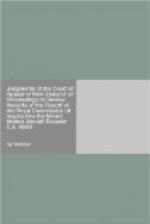(f) I have reviewed the evidence in support of the allegation that the Navigation Section believed, by reason of a mistaken verbal communication, that the altered McMurdo waypoint only involved a change of 2.1 nautical miles. I am obliged to say that I do not accept that explanation. There were certainly grave deficiencies in communication within the Navigation Section, but the high professional skills of the Navigation Section’s staff entirely preclude the possibility of such an error. In my opinion this explanation that the change in the waypoint was thought to be minimal in terms of distance is a concocted story designed to explain away the fundamental mistake, made by someone, in failing to ensure that Captain Collins was notified that his aircraft was now programmed to fly on a collision course with Mt. Erebus.
These paragraphs are attacked on the grounds, in short, that the members of the navigation section said to be adversely affected by them—according to the applicants, Mr R. Brown as regards (e) and Messrs Amies, Brown, Hewitt and Lawton as regards (f)—were not given a fair opportunity of answering the findings or allegations.
To understand this complaint one needs a clear picture of what it was that the Commission found or alleged against the navigation section. When studying the report as a whole we have encountered difficulties in this regard, difficulties not altogether removed when we explored them during the argument with Mr Baragwanath. But our understanding is that in essence the Commissioner suggests that the original change of the southernmost point to one in the Sound, 25 miles west of McMurdo Station, was probably deliberate on the part of the navigation section (although he refrained from a definite finding) and that in November




